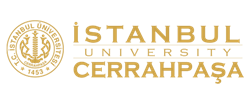Extracorporeal Membrane Oxygenation (ECMO) is a life-saving application which is used as a temporary and artificial support in providing acute circulatory support or respiratory failure of infants/children who have had recent cardiopulmonary insufficiency or cardiac arrest. ECMO is applied as Veno-venous ECMO and Venoarterial ECMO according to the veins of the cannulation. Patients usually need to be supported by ECMO for days and weeks to be able to recover. However, since ECMO is a highly invasive and complex procedure, it can also cause serious complications in newborns and children. Therefore, ECMO needs to be performed by a specially trained health professionals team. Nurses as members of the team should be active both in providing care for children in intensive care setting and in preparing the family for the process and the procedure. ECMO nurse needs to follow all the vital parameters, arterial blood gases, ECMO parameters, fluid intake and output and neurologic conditions of the patient and needs to be careful about the risk of any complications and inform the physician when necessary. The nurse should do daily care of the child and provide proper nutrition to the child. Despite the fact that in the world and in Turkey ECMO is an increasing application in intensive care, as a result of the literature reviews, it is noticed that the studies and publications about this subject are low in our country. Therefore, it is aimed to compile and share information about this subject.


.jpg)


